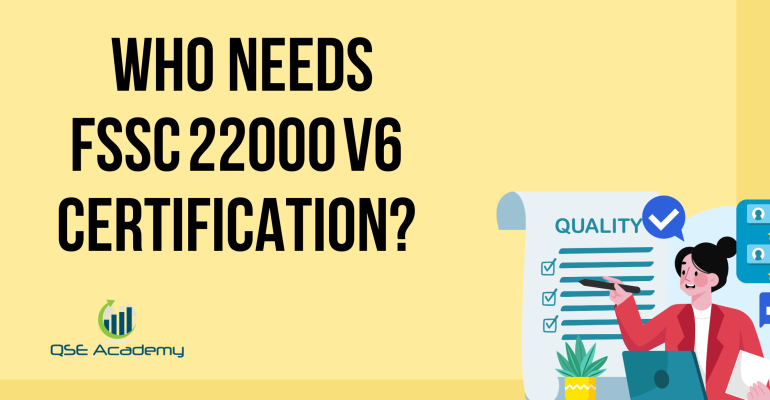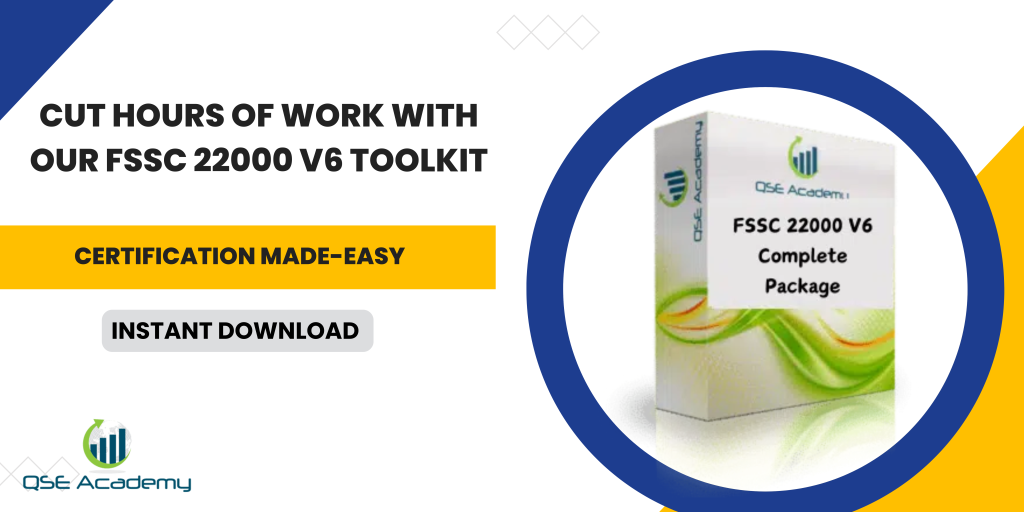Who Needs FSSC 22000 V6 Certification?
Why This Question Matters Now
If you’re in the food business, you’ve likely asked yourself whether FSSC 22000 V6 certification is truly necessary. I’ve guided food manufacturers, packaging suppliers, and logistics providers through this very decision — and most start with the same question: Do we really need it, or is ISO 22000 enough?
The answer depends on who your customers are, what markets you serve, and how ambitious your growth plans are.
FSSC 22000 V6 isn’t just a “nice-to-have.” It’s a global benchmark that proves your food-safety system meets the toughest international expectations.
By the end of this article, you’ll know exactly who needs it, when it becomes essential, and how to decide whether it’s the right move for your organization.
Understanding the Purpose of FSSC 22000 V6 Certification
At its core, FSSC 22000 V6 builds on ISO 22000. It combines ISO 22000’s food safety management system with additional sector-specific PRPs (Prerequisite Programs) and GFSI-required clauses.
Think of it as ISO 22000 with a global stamp of approval. While ISO 22000 ensures your internal systems are sound, FSSC 22000 V6 ensures they’re recognized by the world’s leading retailers, manufacturers, and regulators.
It’s designed to:
- Build consistent food-safety practices across the supply chain.
- Meet GFSI benchmarking requirements.
- Strengthen trust through unannounced audits and transparent reporting.
Pro Tip:
If ISO 22000 is your foundation, FSSC 22000 V6 is your passport to global trade. It shows buyers you operate at a level trusted by international brands.
 Businesses That Need FSSC 22000 V6 Certification
Businesses That Need FSSC 22000 V6 Certification
FSSC 22000 V6 applies to a wide range of sectors. Here’s who typically needs it most:
- Food manufacturers: from dairy, meat, and beverages to frozen and ready-to-eat products.
- Packaging producers: any company making materials that come into contact with food.
- Catering and food-service operators: especially those supplying airlines, hospitals, or corporate clients.
- Storage and transport providers: logistics companies handling raw materials or finished food products.
- Animal feed and pet food manufacturers: newly emphasized under Version 6.
- Retailers and wholesalers: that handle unpackaged or prepared foods.
- Ingredient and additive suppliers: especially those impacting product safety or composition.
Example:
One beverage producer I worked with upgraded to FSSC 22000 V6 after a major supermarket chain made GFSI-recognized certification a listing requirement. Within months, their export volume doubled because they could now meet the retailer’s supplier criteria.
When FSSC 22000 V6 Becomes a Business Requirement
Sometimes, certification isn’t a choice — it’s a condition of doing business.
- Customer or retailer requirements: Many global brands (like Nestlé, Unilever, and Carrefour) only accept FSSC 22000-certified suppliers.
- Export and trade access: GFSI recognition ensures your certification is accepted globally.
- Regulatory alignment: It aligns closely with HACCP and Codex Alimentarius principles, reducing regulatory hurdles.
- Reputation and risk control: Certification signals reliability and minimizes the risk of recalls or safety incidents.
Pro Tip:
Before you decide, review your top three customers’ supplier requirements. Many have already shifted to GFSI-recognized schemes like FSSC 22000 V6.
Common Mistake:
Believing ISO 22000 automatically meets global buyer expectations. It doesn’t. FSSC 22000 adds the extra verification layers they’re looking for.
Comparing FSSC 22000 V6 and ISO 22000 — Who Should Upgrade
Here’s a side-by-side look:
| Aspect | ISO 22000 | FSSC 22000 V6 |
|---|---|---|
| Recognition | Not GFSI-recognized | GFSI-recognized |
| Scope | General | Industry-specific |
| Market Demand | Moderate | High (retail/export) |
| Audit Approach | Announced | Includes unannounced |
| Extra Requirements | — | Food fraud, defense, culture |
If your business supplies major brands or exports under private-label contracts, upgrading to FSSC 22000 V6 is the logical next step. It shows commitment beyond compliance — it shows global readiness.
Pro Tip:
Upgrade once your customer documentation starts referencing “GFSI-recognized certification.” That’s your signal.
Benefits of FSSC 22000 V6 for Eligible Organizations
Organizations that meet FSSC 22000 V6 requirements enjoy both strategic and operational gains:
- Global recognition: Instantly trusted by retailers, regulators, and brand owners.
- Fewer duplicate audits: GFSI alignment eliminates overlapping customer audits.
- Improved internal systems: Enhances traceability, risk management, and food-safety culture.
- Reputation boost: Certification demonstrates maturity and responsibility in food safety.
Example:
A seafood exporter we supported used their FSSC 22000 V6 certificate to enter European retail chains without additional customer audits. It saved them both time and travel costs.
Who May Not Need FSSC 22000 V6 (Yet)
Not every organization needs to rush into certification.
- Small local producers that sell directly to consumers.
- Businesses with no export or retail clients.
- Companies still developing basic food-safety systems.
For these, ISO 22000 is an ideal starting point. It helps build a solid management system that can evolve into FSSC 22000 later.
Pro Tip:
Focus first on compliance, training, and system discipline. Once your customer base expands, upgrading will be easier and more affordable.
FAQs — Determining FSSC 22000 V6 Applicability
Q1: If we already have ISO 22000, do we need FSSC 22000 V6?
If your customers or regulators demand GFSI-recognized certification, yes. Otherwise, ISO 22000 remains sufficient for internal improvement.
Q2: Can packaging manufacturers get certified?
Yes. FSSC 22000 V6 includes a dedicated category for packaging and food-contact materials.
Q3: Does it apply to logistics or catering?
Absolutely. Both sectors are explicitly covered in the FSSC 22000 scheme.
Conclusion — Deciding If FSSC 22000 V6 Is Right for You
FSSC 22000 V6 isn’t a one-size-fits-all solution, but for businesses aiming to grow internationally, it’s the right move. It strengthens your credibility, opens new markets, and gives customers confidence that your products are safe and consistent.
After helping dozens of organizations make this decision, my advice is simple:
Match your certification strategy to your business goals, not trends.
If you’re unsure, start with a quick self-assessment.
Next Step:
Download QSE Academy’s FSSC 22000 V6 Readiness Checklist or book a free consultation to determine whether your company qualifies — and how to make certification a growth advantage, not a burden.
Melissa Lavaro is a seasoned ISO consultant and an enthusiastic advocate for quality management standards. With a rich experience in conducting audits and providing consultancy services, Melissa specializes in helping organizations implement and adapt to ISO standards. Her passion for quality management is evident in her hands-on approach and deep understanding of the regulatory frameworks. Melissa’s expertise and energetic commitment make her a sought-after consultant, dedicated to elevating organizational compliance and performance through practical, insightful guidance.








